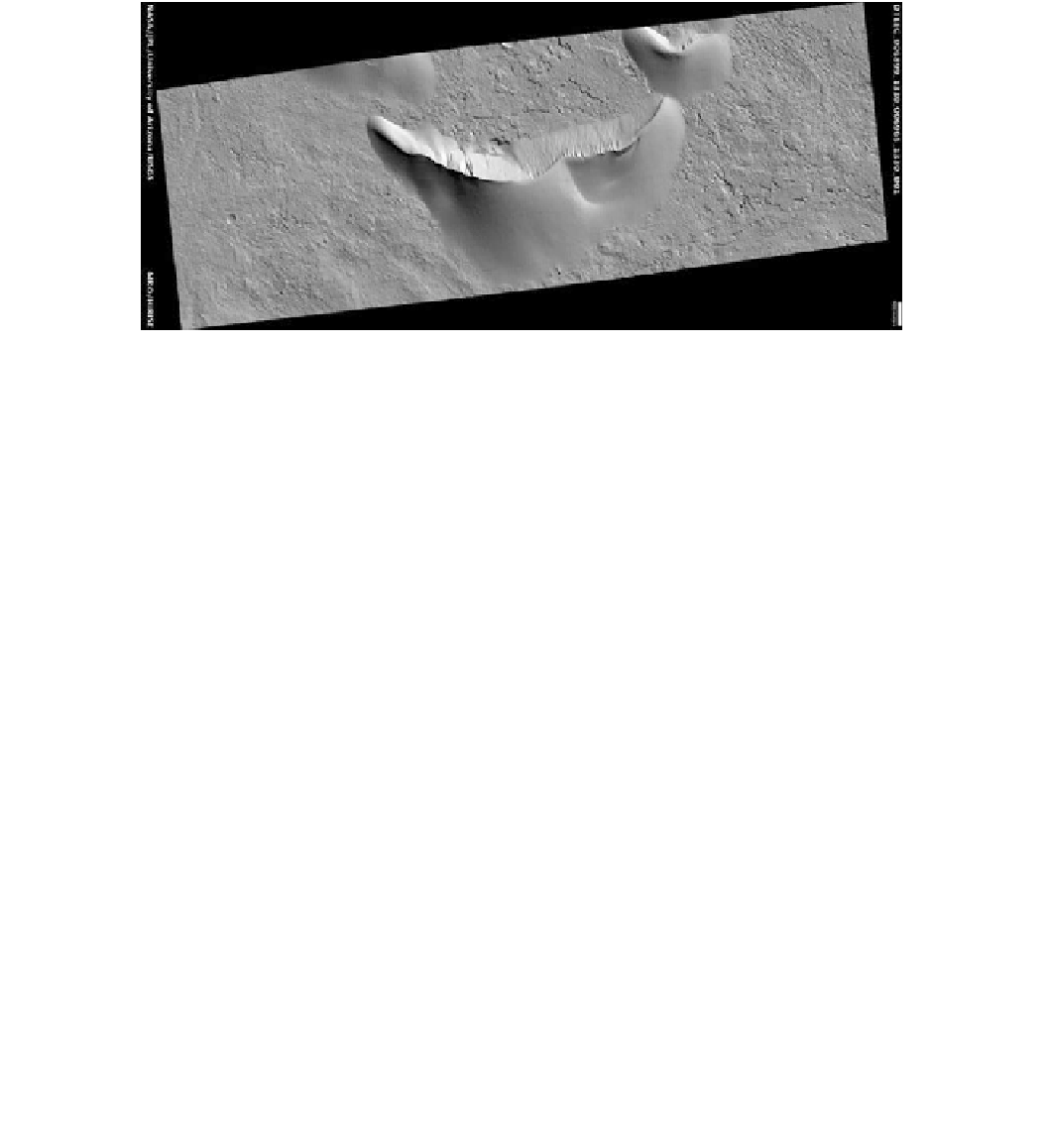Geoscience Reference
In-Depth Information
Fig. 12.10
A shaded relief display of digital elevation data derived
from a stereo pair of HiRISE images (PSP_006899_1330 and
PSP_006965_1330) for a barchan dune on the floor of Kaiser crater.
The elevation data were collected to investigate avalanche features on
the slip face of the dune. The scale of this rather conventional-looking
barchan is much larger than corresponding examples on Earth—the
crest to the floor at the base of the slipface is a drop of some 300 m,
over a magnitude larger than is typical for Earth barchans of the same
shape. Image credit NASA/JPL/U of A/USGS
Fig. 12.11
'Wing-shaped' barchan dunes in the floor of Proctor
crater, now observed in 2010 at a resolution of *0.5 m by the HiRISE
camera on Mars Reconnaissance Orbiter. Not only is the shape of the
dunes clearly shown, but their superposition on bright transverse
aeolian ridges (TARs) is evident (and close view would show
individual ripples on the dunes). Credit NASA/JPL-Caltech/University
of Arizona
Fig. 12.12
Transitional linear to dome forms. No sharp slip faces are
obvious here. Image credit HiRISE browse image, NASA/JPL/U.
Arizona
the linear and dome features are usually much darker than
their surroundings, including bright features that may con-
sist of granule-coated sand ripples. Star dunes, or at least
akle patterns, have formed on some sand deposits inside
large impact craters, where the crater landform may con-
tribute to the formation of complex wind patterns (Fig.
12.
13
). However, even the best stars typically have two arms
that are better developed than the third (or fourth) arm,
suggesting that either these features are evolving from a
earlier transverse pattern, or that perhaps they may now be
evolving toward a transverse pattern.
It is important to note that, after nearly 40 years of
spacecraft imaging of Mars, only within the last several
years have several cases of sand movement been docu-
mented on Mars. Starting with the disappearance of dome
dunes in the NPE identified through the analysis of nearly a
decade of MOC images, it has become readily apparent with
HiRiSE data that sand is indeed moving on Mars today.
Observations made during the 4-6 years of operation of the



Search WWH ::

Custom Search